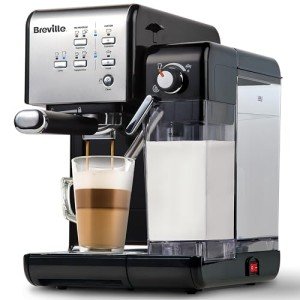The Art of Italian Espresso Machines: A Brewed Tradition
Italian espresso machines are not just devices; they are an integral part of Italy's rich coffee culture, representing a blend of artistry, engineering, and style. Coffee aficionados around the world recognize the importance of high-quality espresso, a staple of Italian life and cuisine. This short article checks out the history, mechanics, types, and factors to consider when purchasing an Italian espresso machine, showing the depth of this beloved drink and its developing approaches.
History of Espresso Machines
The espresso machine's advancement dates back to the early 20th century in Italy, where coffee was not simply a drink however an important social routine. Buy Coffee Machine to brew espresso begun with simple, stove-top models, gradually developing into complex machines that could duplicate the ideal brew.
- 1901-- The First Espresso Machine: The very first steam-powered espresso machine, referred to as the "Ideale," was established by Luigi Bezzera. This equipment marked a turning point in espresso developing.
- 1938-- The Lever Machine: The introduction of the lever machine made it easier to control the pressure used in espresso extraction, boosting flavor consistency.
- 1947-- The Automatic Machine: Reaching more customers, Gaggia launched the very first automatic espresso machine, further popularizing espresso bars.
- 2007-- The Digital Age: Technological improvements resulted in the birth of completely programmable machines, enabling users to tailor their brewing settings to attain a personalized coffee experience.
Key Features of Italian Espresso Machines
Italian espresso machines embody precision, craftsmanship, and development. Here are some essential elements that highlight their significance:
| Feature | Description |
|---|---|
| Boiler Type | Figures out how heat is created and preserved. Common types consist of single boiler, dual boiler, and heat exchanger. |
| Group Heads | Where the coffee is brewed; commercial machines often have multiple group heads for effectiveness. |
| Pressure Control | Important for accomplishing the ideal espresso; most machines operate at 9 bars of pressure. |
| Frothing Capabilities | The steam wand enables milk frothing, vital for beverages like cappuccino and latte. |
| Construct Quality | The materials utilized (stainless-steel, brass, etc) impact durability and heat retention. |
Types of Italian Espresso Machines
Picking the ideal machine depends upon user choices, budget, and meant use. Below are the primary kinds of Italian espresso machines:
Manual Espresso Machines
- Pros: Offer full control over the brewing process, enabling a personalized touch.
- Cons: Require skill and practice, can be labor-intensive.
Semi-Automatic Machines
- Pros: Provide a balance in between automated and manual procedures; users manage water flow.
- Cons: Can have a steeper learning curve than completely automatic machines.
Completely Automatic Machines
- Pros: Simplify the developing process with push-button operations; perfect for novices.
- Cons: May compromise a few of the subtleties of manual brewing.
Super-Automatic Machines
- Pros: Grind, tamp, brew, and froth immediately; hassle-free for busy way of lives.
- Cons: Less control over the brewing variables, capacity for a less authentic espresso experience.
Purchasing Guide: Factors to Consider
Selecting the perfect Italian espresso machine can be overwhelming, but considering the following factors can simplify the decision-making process:
- Budget: Italian espresso machines range from affordable to high-end models, so set a budget upfront.
- Usage Frequency: Evaluate how typically you will use the machine; day-to-day users may want a more durable choice.
- Area: Measure your cooking area or counter space; some machines can be large and need adequate clearance.
- Maintenance: Consider ease of cleansing; machines with detachable parts or built-in cleansing features may reduce upkeep.
- User Skill Level: Beginners may choose totally or semi-automatic machines, while knowledgeable baristas can handle manual machines.
- Brand name Reputation: Research brand names understood for quality, such as Breville, Gaggia, and La Marzocco.
Popular Italian Espresso Machine Brands
Italian craftsmanship is renowned for producing some of the best espresso machines worldwide. Here are top brands worth thinking about:
- Gaggia: Known for its home espresso machines and cost.
- La Marzocco: A premium brand name understood for its commercial-grade machines and innovative innovation.
- Rancilio: Renowned for its durable develop and professional-quality machines appropriate for home and commercial use.
- Sage/Breville: Offers advanced functions and user-friendly styles, perfect for both amateurs and enthusiasts.
Frequently asked questions
What is the distinction between espresso and regular coffee?
Espresso is a focused coffee brewed by forcing warm water through finely-ground coffee under pressure. Espresso Machines Under £1000 has a thicker consistency, richer flavor, and higher caffeine concentration than regular coffee.
Can I make milk-based drinks with an espresso machine?
Yes, numerous Italian espresso machines come with a steam wand to froth milk for beverages like cappuccinos, lattes, and macchiatos.
How frequently should I clean my espresso machine?
Regular upkeep is necessary. Generally, a thorough cleaning is suggested every couple of weeks, while descaling should be done every 1 to 3 months, depending upon water solidity.
What is the ideal pressure for brewing espresso?
The perfect pressure for brewing espresso is around 9 bars. This pressure ensures the optimum extraction of tastes from the coffee premises.
Are more pricey machines worth the investment?
Higher-end machines often make use of much better materials and technology, supplying improved resilience and more constant outcomes. For major coffee fans, investing in a great machine can raise the espresso experience significantly.
Italian espresso machines are far more than mere developing gadgets; they are a celebration of a cultural custom that has affected coffee consumption worldwide. With various models offered to fit any user's needs-- varying from novices to experienced baristas-- there is an Italian espresso machine perfectly matched for everybody. As you embark on your espresso journey, understanding the history, mechanics, and alternatives will enhance your experience and appreciation for this time-honored beverage. Whether Espresso Machines Under £100 seek to recreate a coffee shop ambiance at home or refine your brewing method, these machines can providing memorable cups of espresso embellished with the abundant history of Italian coffee culture.

